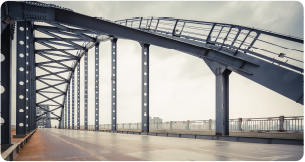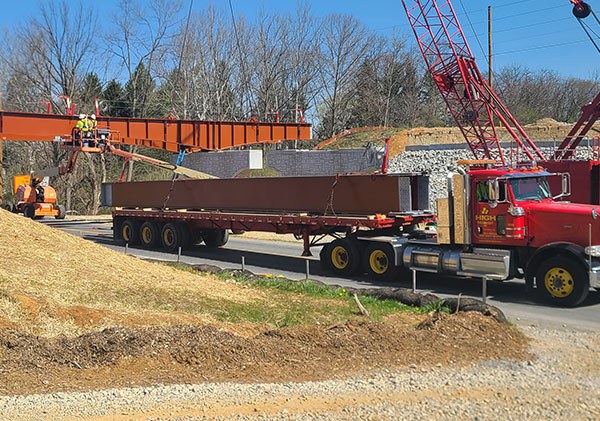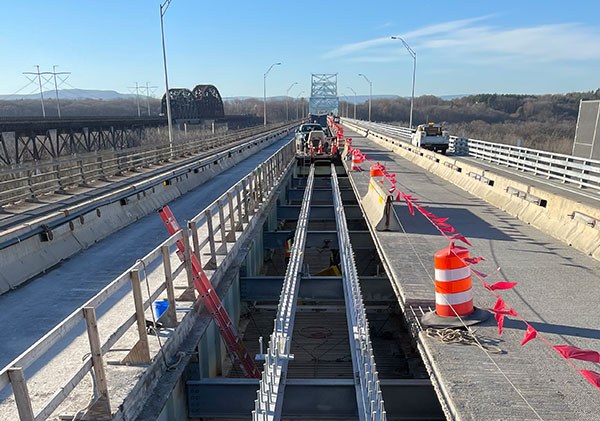The Eagle Bridge Co. and Evers Steel Construction worked with engineers to rehabilitate the Blome Road Bridge located in the Village of Indian Hill (Cincinnati, Ohio). The bridge carries a one lane of a two-lane road over a stream in a wooded area with homes nestled in the landscape of the neighborhood. A sign on the bridge identifies it as an Indian Hill Historical Society Landmark. The load bearing beams are being replaced with concrete and the trusses will be widened slightly by two feet and reinstalled.
Crossing a tributary of Sycamore Creek, this attractive 94’ in length bridge was built in 1888 by the Queen City Bridge Company, perhaps the only surviving example of a bridge built by this company. It is a pin-connected Pratt through truss bridge. The structure is composed of six panels. It is most noted for its slight skew, rare among pin-connected truss bridges. Although modern railings are in front, the original pipe railings remain behind them. They are highly unusual because they pass through the vertical members and the end posts. This railing design is clear evidence that railings in this era were not built with protecting the trusses in mind.


Hamilton County built a beam bridge underneath the truss bridge, making the truss essentially decorative and non-functional for supporting the load of vehicles. Another perspective is that this method eliminated the need to repair or retrofit the truss to continue to support traffic at a high weight limit. Thus, it limited alterations to the original truss design and materials. This example of adding beams under the bridge was especially unobtrusive because the beams were added under the floor beams. Sometimes the floor beams would be removed with this method, which would alter the bridge, but this was not the case here.
V&S Columbus Galvanizing worked closely with Evers Steel Construction. The 30,000 lb. bridge rehabilitation consisted of blasting the steel, then coordinating shipping material to V&S Galvanizing. Once hot-dip galvanized, we coordinated with Evers Steel Construction on delivery times that met their schedule for completion. This consisted of timely calls to keep the lines of communication open and the project moving forward. The hot-dip galvanized material will stand the test of time as it moves into another century with its coating durability, corrosion performance and sustainability.






 SEE MORE
SEE MORE

